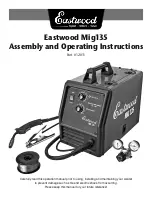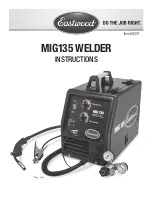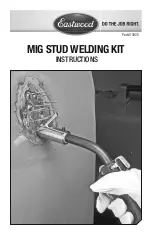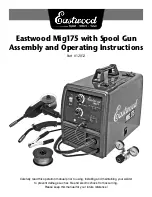
Page 3 - 14
TL49J
coil is activated, a strong magnetic force is felt pulling the screwdriver towards the nut securing the
coil to the cartridge.
Do not use great force when securing the coil to the cartridge as the casing can easily crack due to
thermal expansion when heated up during use. The coil will fail if water gets through the crack.
OUTRIGGER CONTROL VALVE
This valve is not interchangeable with the ground control valve even tough it is a 4 bank valve block
with a relief valve and looks identical to the ground controls.
When the spool is in the neutral position, the
annular side of the ram is attached to the tank
line. This is done to ensure that the pilot pressure
holding the check valve on the full bore open is
drained of quickly to tank so that the check valve
closes quickly.
If the valve block is replaced, make sure that
the piping is done exactly as shown. Rely on the
closed port as back up for the check on the full
bore side.
Note that earlier versions might not have this type
of spool. This type can easily be identified as it
has a “DIN - Oil” stamped on the end cap. This
type used a standard closed centre valve block.
The leakage rate across the closed centre spool
is high enough to ensure that the deck would
close.
Each A port has a restrictive hose adaptor fitted in the valve block. If the restrictor gets blocked, the
cylinder will not operate correctly.
When looking for a fault relating to cylinders and valve blocks, swapping hose connections can eas-
ily provide a good pointer to where the fault is. If the fault position doesn’t change, then the fault is
in the valve block. If the fault position moves, then the fault is in the cylinder.
Do not overtighten the hose fittings. Overtightening can lead to leakages due to deformation of the
adaptor cone.
RESTRICTORS
All valve blocks have restrictors fitted at different locations. The current versions (2002) of the TL49J
uses a hose adapter with a drilled hole. Other types which have been in use (and currently are on
other machines) are a simple copper washer with a sized hole. The copper washer is squashed
between the hose fitting and the adapter screwed into the valve block.
It is easy to observe that a copper washer type restrictor has been used as it looks like the hose
fitting is not screwed fully down onto the adapter in comparism to the hose fitting next to it. A large
force is needed when tightening the hose fitting to prevent leaks.
SERVICE AND REPAIR
Figure 3-12
: Schematic view of outrigger
control valve.
Figure 3-13
: Hose adaptor shown here with
drilled hole. If cylinder movement is erratic,
check for contamination.
Figure 3-14
: Copper restrictor fitted
loose in the hose adaptor. Hose end
requires more torque to prevent oil
leak when securing hose.
















































